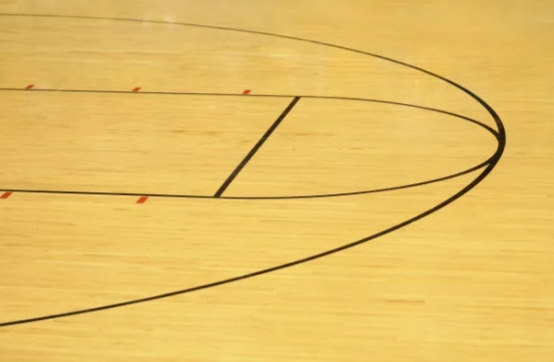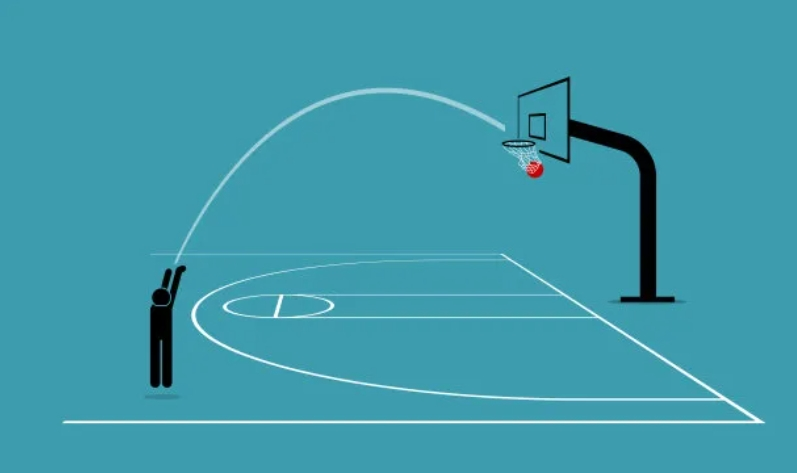The Arc of Innovation: How Basketball's Three-Point Line Came to Be
Ever wonder about that painted arc on the basketball court, the one that can instantly flip a two-point deficit into a one-point lead? That’s the three-point line, and its story is a fascinating blend of innovation, strategy, and a little bit of rebellion. Far from an original feature, this game-changer wasn't born in the NBA. It took decades, driven by a desire to spice things up and spread the love beyond the paint.

A Shot in the Dark: Early Concepts and The ABL's Bold Move
Believe it or not, the idea of rewarding a longer shot has roots stretching back to Dr. James Naismith himself, who envisioned a way to encourage outside shooting. Early experiments popped up in collegiate games as far back as the 1940s and 50s, hinting at what could be.
But the real pioneer was the American Basketball League (ABL). In 1961, ABL owner Abe Saperstein, looking to make his league more exciting and distinct from the established NBA, introduced the first professional three-point line. It was set at a generous 25 feet, though corners were at 22 feet. "We needed a gimmick," Saperstein reportedly said, and what a "gimmick" it turned out to be! This bold move laid the groundwork, even if the ABL itself was short-lived.
The ABA's Flair: Popularizing the Long Ball
The torch was then picked up by the American Basketball Association (ABA), a vibrant, flashy league that emerged in 1967. With its red, white, and blue ball and an emphasis on high-flying dunks, the three-pointer fit right into its ethos of entertainment. George Mikan, the legendary former Lakers star and ABA commissioner, was a huge proponent. He famously declared the three-point shot would "open up the game" and be a "shot of excitement." He was right.

The ABA adopted the line for its inaugural 1967-68 season, using a 23-foot, 9-inch arc, just like today's NBA line (with 22-foot corners). Players like Louie Dampier became masters of the deep shot, showcasing its potential and dazzling fans. The ABA's embrace of the three-pointer was instrumental in demonstrating its viability and entertainment value, essentially pressuring the older, more traditional NBA to take notice.
The NBA Catches On: From Gimmick to Cornerstone
For years, the NBA resisted. Many purists dismissed the three-point line as a "gimmick," fearing it would detract from the fundamental aspects of the game. But as the ABA gained popularity and proved the shot's appeal, the NBA finally relented.
In the 1979-80 season, the National Basketball Association officially introduced the three-point line, adopting the same 23-foot, 9-inch (22-foot in the corners) distance that the ABA had used. On October 12, 1979, Chris Ford of the Boston Celtics etched his name in history by sinking the very first NBA three-pointer. It wasn't an immediate revolution; teams and players took time to adapt, often viewing it as a desperation shot. Legendary coach Red Auerbach initially called it "bull----."
A Shifting Landscape: Evolution Across Leagues
The three-point line wasn't static after its NBA debut.
- NBA: In a short-lived experiment from 1994-95 to 1996-97, the NBA actually shortened its line to a uniform 22 feet to try and boost scoring, a move some argue was a mistake. They reverted to the original 23'9" arc for the 1997-98 season, where it has remained ever since.
- NCAA: College basketball adopted the three-point line nationwide in 1986-87 at a distance of 19 feet, 9 inches. It was later moved back to 20 feet, 9 inches in 2008-09, and most recently, to the FIBA distance of 22 feet, 1.75 inches (6.75 meters) in 2019, further aligning the global game.
- FIBA: The international governing body introduced its three-point line in 1984 at 6.25 meters (approximately 20 feet, 6 inches), before moving it back to the current 6.75 meters (22 feet, 1.75 inches) in 2010.

More Than Just Points: The Enduring Impact
The three-point line has fundamentally reshaped basketball. It spread the floor, forcing defenses to extend and creating more driving lanes. It transformed offensive strategies, making the "stretch big" and the "3-and-D" specialist crucial roles. What started as a "gimmick" is now an indispensable part of the game, a symbol of innovation that continues to drive basketball's evolution worldwide.





